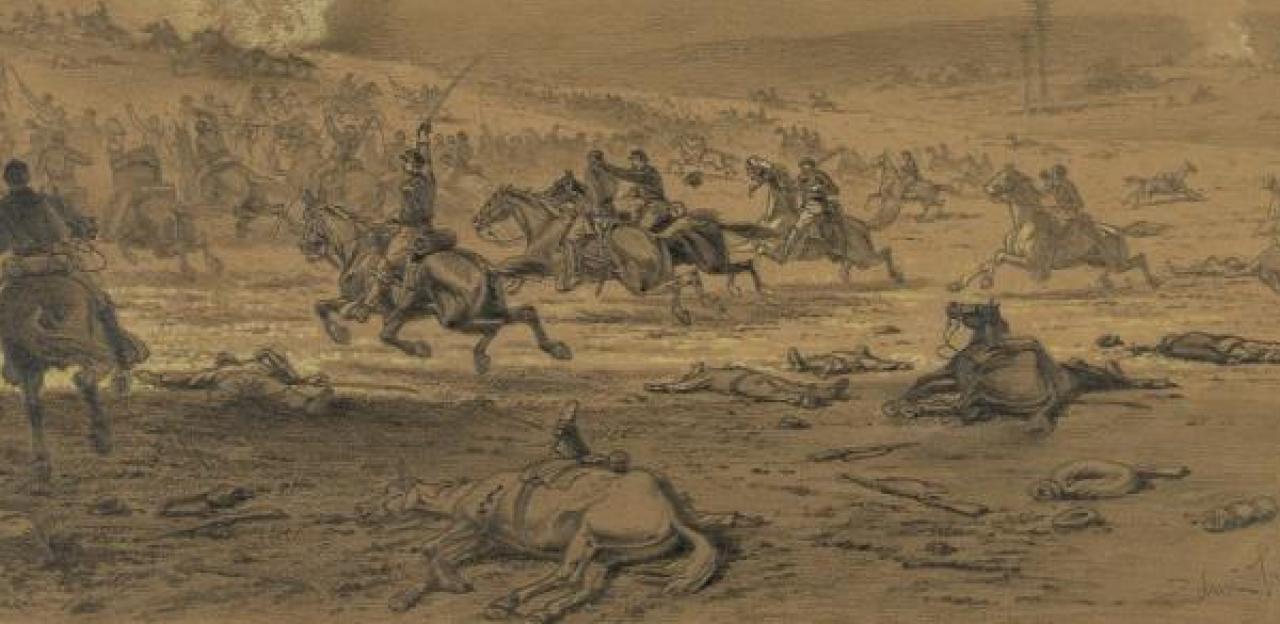Cavalry Glossary

The American Cavalry possesses a long and storied history, but that history often goes understated or forgotten. Most of the citizen soldiers in America's early wars consisted of foot soldiers, as they were less expensive to recruit, equip and maintain, and could be drawn from many levels of society. Cavalry, on the other hand, was expensive and so the military leadership often treated it as an afterthought. In fact, many of the types of cavalry troops we can see in Europe from the same periods, such as lancers or the heavy cuirassiers who still wore steel armor, do not appear at all in American military history. Still, the cavalry soldiers in America used an incredible variety of equipment, labels, and functions.
Tactics and Function:
Cavalry: Refers to any soldier that marches or fights on horseback.
Light/Heavy: The terms "light" and "heavy" cavalry are generally relative, but usually, "light" refers to troops designed mostly for mobility and speed and engaged in scouting, raiding and screening, while "heavy" refers to cavalry designed to use their mass to make an impact on the battlefield and sturdy enough to remain in the melee.
Charge: Unlike infantry charges, cavalry charges work like an enormous game of chicken. The horse and rider gallop at high speed towards the enemy, using their own combined weight as a weapon to crush and trample over anyone who gets in the way. The threat of a charge alone could break a poorly disciplined unit, which actually was the worst response since now the fleeing soldiers were vulnerable to being cut down by pursuing horsemen.
Screening: Disguising troop movements from the enemy by using cavalry to attack and chase away scouts and other prying eyes.
Mounted Infantry: Soldiers who would ride on campaign and into battle, but then dismount to actually take position and fight.
Cavalryman Class:
Dragoon: Historically, dragoons were mounted infantry when they first appeared in the 16th century but evolved into an all-purpose "medium" cavalry that could essentially be used for any role. The mounted infantry role actually came back into prominence with the arrival of the repeating rifles.
Hussar: Style of light cavalrymen that originated from Eastern Europe, especially Hungary. They were made to be as fast and mobile as possible, and were famous at raiding and pursuing fleeing troops, along with their ostentatious and Orientalized uniforms. Foreign cavalry commanders like Casimir Pulaski of Poland and Michael Kovats of Hungary modeled the Americans under their command exactly like the hussars they commanded back home.
Equipment:
Saber: A sword designed with a curved blade and a single edge, which encouraged slashing more than thrusting in combat, making it easier to use from horseback.
Carbine: A dragoon's principal weapon, a carbine refers to a shorter, lighter version of any musket or rifle, from early matchlocks to modern-day assault weapons. This made them easier to carry, load and sometimes fire while mounted.
Repeating Rifle: These weapons came into prominence during the middle stages of the war, and later during the Western Expansion. Such rifles such as the Spencer or Henry allowed a soldier to load multiple rounds into the gun and fire without having to reload.

